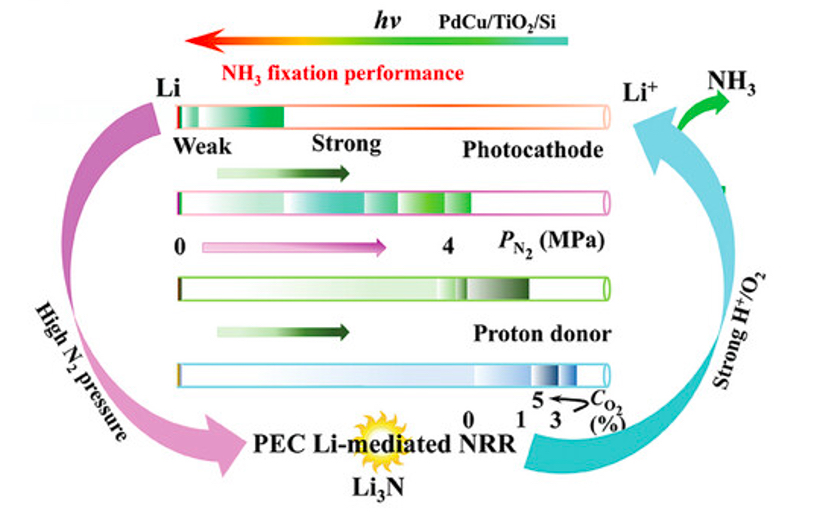Characterising a cleaner way to produce ammonia
|Ammonia (NH3), a widely used chemical, is also a critical substance in the production of nitrogenous fertilizers. It is estimated that the current Haber-Bosch synthesis of ammonia is responsible for about 2% of the world’s energy consumption and 1.8% of total global CO2 emissions. Scientists are therefore looking for new solutions to overcome the energy and environmental challenges. Photoelectrochemical nitrogen reduction reaction (PEC NRR) is an alternative route to synthesize ammonia in a solar-powered, green and sustainable way.

A promising strategy is electrochemical Lithium (Li)-mediated NRR, a process that could reduce the amount of external energy required. However, this process is poorly studied and there is no fundamental understanding of its catalytic mechanism, making its improvement challenging. Dr Xiaoran Zhang (Hunan University, China), Dr Nataliya Tsud (Charles University, Prague, Czech Republic) and colleagues have shown that the Li-mediated PEC NRR by using silicon (Si)-based hierarchically structured PdCu/TiO2 photocathodes in a lithium perchlorate-propylene carbonate solution can achieve a high NH3 yield rate and excellent faradaic efficiency. Lithium perchlorate was used as the electrolyte component due to its high stability, safety, and free labile N-containing group. PEC measurements reveal that the chosen photocathode under N2 pressure facilitates the formation of lithium nitride (Li3N), which reacts with the active protons to produce NH3 while releasing the Li+ to restart the NRR cycle. The process can be further enhanced by introducing small amounts of O2 or CO2 under pressure.
In addition, the researchers used field emission scanning electron microscopy (FESEM) to reveal the morphology of the Si-based photocathode, and performed synchrotron radiation X-ray photoelectron spectroscopy at the Materials Science Beamline (MSB), Czech beamline at Elettra Sincrotrone Trieste, to study changes in the chemical state and electron structure of the photocathode surface in the dark and under illumination.
For the first time, through comprehensive operando characterization, the research group obtained a detailed description of the Li-mediated PEC NRR process using a Si-based photocathode, providing a novel approach for fast, cost-effective, and efficient green conversion of N2 to NH3. This work provides a new and systematic strategy for the rational design and development of Li-mediated PEC NRR systems for NH3 synthesis.
ORIGINAL ARTICLE:



